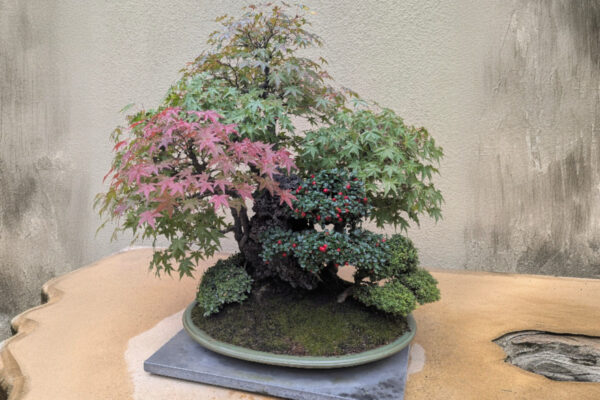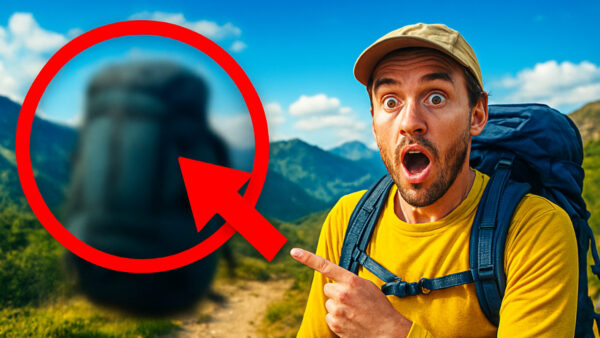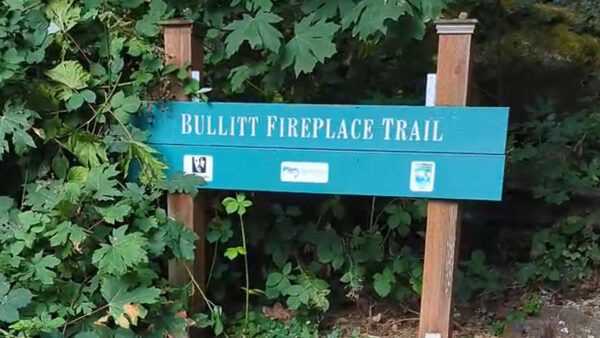When it comes to ancient caves, many people think of far-off destinations like France or Indonesia. However, tucked away in the Coulee Country of central Washington lies a hidden treasure that offers a glimpse into the past—the Lake Lenore Caves. These caves, located near Dry Falls State Park, were formed thousands of years ago during the Great Missoula Flood, and they have a rich history that dates back to the Native Americans who once called this area home.
The Lake Lenore Caves may not have the same grandeur as the famous Carlsbad Caverns or other well-known caves, but they hold their own special glimpse into the history of the PNW.
The trail that leads to the caves is less than a mile and a half long, making it a perfect stop for a quick hike on your way through the area. Which is exactly what I did on a recent road trip to Idaho. I was looking for one of the historic roadside markers that is located at the trailhead, and figured I would hike the trail while I was there.
Getting To The Lake Lenore Caves Trailhead
To reach the Lake Lenore Caves, you’ll need to travel to central Washington. From major cities like Seattle, Spokane, or Moses Lake, you can plan a drive that takes approximately 2-3.5 hours. The caves are located near Dry Falls State Park, making them an excellent addition to your trip to this stunning natural area.
Once you arrive at Dry Falls State Park, head towards Lenore Lake Road, which leads to the parking lot near the Lake Lenore Caves. It’s important to note that a Discover Pass is required for parking at the state park. Make sure to obtain the pass in advance to avoid any delays or complications on the day of your visit.
The parking lot provides easy access to the trail that leads to the Lake Lenore Caves. This trail is suitable for hikers of all ages and skill levels. Just be prepared for uneven surfaces and rocky terrain along the way. Remember to stay on the designated paths and respect the natural environment to preserve the beauty of this unique destination.
The Enigmatic Beauty of Lake Lenore Caves
The Lake Lenore Caves are cool, but I’d say they are almost overshadowed by the beauty of the geology around them.
The jagged basalt formations and intricate patterns on the cave walls tell the story of the region’s tumultuous past. Step inside and be transported to a time when these caves served as shelters for Native American tribes, providing them with protection and a sense of home in the rugged landscape.
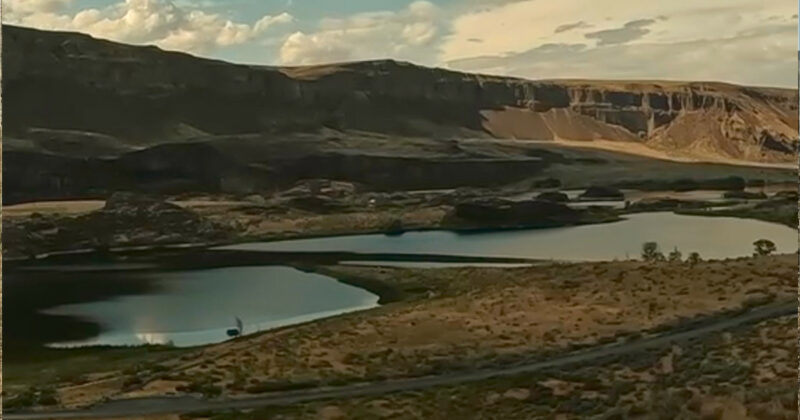
How Were the Lake Lenore Caves Formed?
The Lake Lenore Caves were formed during the Missoula Floods at the end of the last Ice Age, approximately 13,000 to 15,000 years ago. These catastrophic glacial floods carved through the basalt rock of what is now the Lenore Canyon, creating the caves along with other geological features such as coulees, ridges, cliffs, and plateaus. Over time, the caves expanded as water seeping through the formations broke pieces free, making them the size they are now.
How Deep Are the Lake Lenore Caves?
The depth of Lake Lenore Caves varies, but none are particularly deep, I’d say no more than 30′ in the largest. These unique formations are really best described more as “shallow cave-like openings” than true caves. I can imagine they made a great place to hide from the mid-day sun though.
The Cultural Significance: Native American History
The Lake Lenore Caves were not a permanent settlement, but a place for local people to use as a base camp while hunting and foraging in the area. We know this from the items found in the cave that archeologists surmise were left behind by people expecting to come back later in the year of the following season.
Preparing for Your Trek: What You Need to Know
Before embarking on your trek to the Lake Lenore Caves, there are a few essential things you need to know. First, consider the best times to visit, as weather conditions can vary throughout the year. Second, make sure to pack the necessary gear and follow safety tips to ensure a smooth and enjoyable hiking experience. By being prepared, you can make the most of your time exploring the caves and the surrounding area.
Best Times to Visit: Seasonal Advice
The best times to visit the Lake Lenore Caves depend on your personal preferences and the weather conditions you are comfortable with. Personally, I would say that March through October are the prime months, but I prefer the spring season when things are blooming.
Here are some seasonal tips to help you plan your visit:
- Spring (March to May): Springtime brings mild temperatures and blooming wildflowers, making it a pleasant time to explore the caves. However, be prepared for possible rain showers.
- Summer (June to August): Summer offers the warmest temperatures and virtually guarantees you won’t get rained on. Keep in mind that it will get hot once the sun comes up, so bring plenty of water and sun protection.
- Fall (September to November): Fall brings cooler temperatures and vibrant foliage, creating a picturesque setting for your trek. It’s a great time to visit if you prefer milder weather and fewer crowds.
- Winter (December to February): Winter brings colder temperatures and the possibility of snow. While the caves may be less crowded, be prepared for slippery conditions and dress warmly.
Essential Gear and Safety Tips
While the Lake Lenore Caves trail is short, it still requires some level of caution. The terrain is uneven, there are some ledges, and during the warm months there is always the possibility of encountering a rattlesnake. This coupled with the fairly remote location means you should be cautious when hiking on this trail.
Here are some tips for hiking the Lake Lenore Caves Trail:
- Wear sturdy hiking shoes or boots for traction on uneven surfaces.
- Dress in layers to adapt to changing weather conditions.
- Pack plenty of water and snacks to stay hydrated and energized.
- Bring a trail map and compass or use a reliable navigation app on your phone.
- Stay on designated paths and respect the natural environment.
- Be aware of your surroundings and watch for snakes.
- Check the weather forecast before your hike and be prepared for changing conditions.
Exploring the Caves: A Detailed Look Inside
When you head out to the caves, the worst of the very small gain is coming from the parking lot up to the first ledge. A trail leads out past an interpretive sign, worth readying BTW, and off to a trail leading to some conveniently placed stairs to get you up to the first ledge.
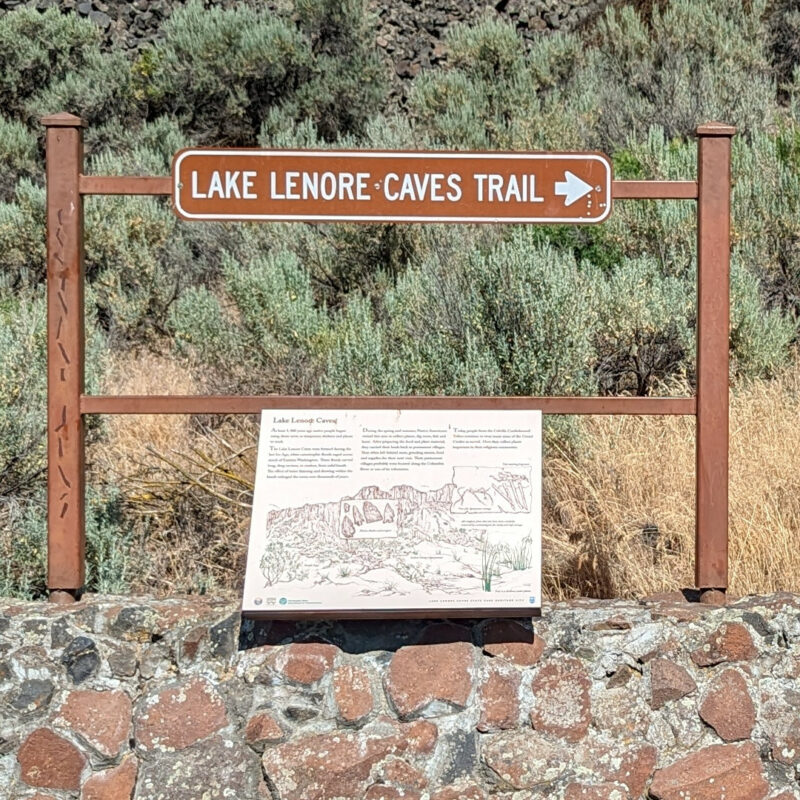
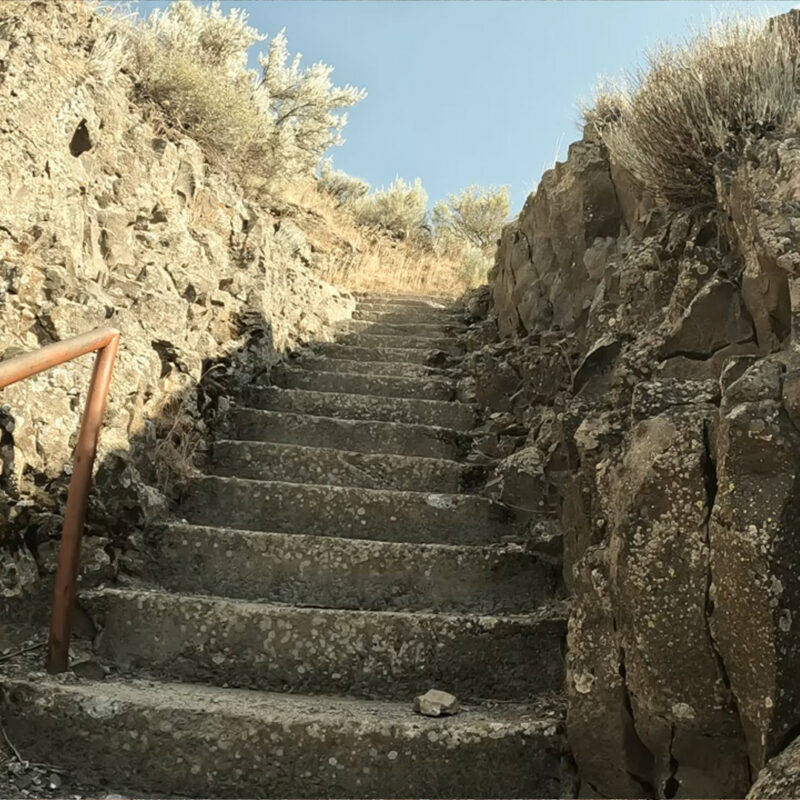
Shortly after you get to the top, they trail splits. I didn’t take the trail to the left, but all the reports I’ve read say that it doesn’t lead to any caves and just end after a short distance. Stay to the right and start looking for caves.
The first are visible pretty quickly. These are very small, shallow pockets that honestly aren’t the impressive, but keep going, they get better.
There are multiple trails through the brush and rock, so choose your own adventure, but just generally keep heading down the bluff and you will find the next few caves. They are bigger and more impressive and standing in them you can really imagine people sitting here in the shade processing game or plants that they had foraged all morning.
I will admit though that I can’t imagine hanging out in these caves all day, mostly because of the ceiling. The basalt that makes up these caves it very fractured and water is seeping through the rocks. The floor of the cave is littered with chunks of rock from the ceiling, some of which I’m not sure how are hanging on.
Let’s just say I’m not a fan of sitting around enjoying the shade when a 30-pound chunk of the ceiling falls on my head. I can see that happening in these caves.
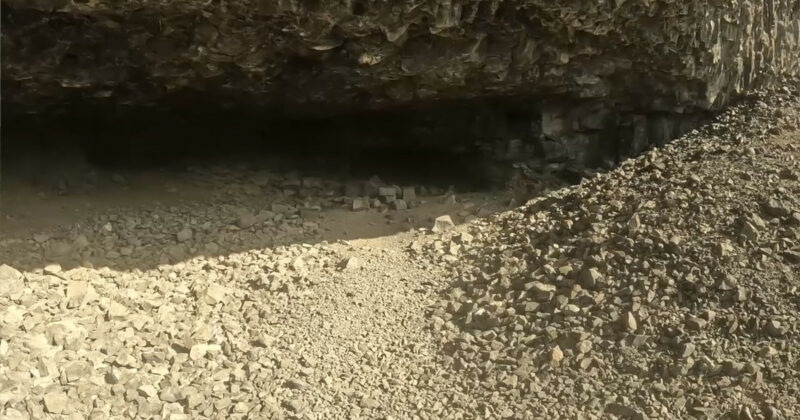
After the biggest of the caves you have found, the trail has one spot that you will have to scramble up to get to the big, really cool cave.
A little more hiking brings you to a pothole with a cave in the side of it that looks like something out of a movie set it is so perfect. It even has a damp spot in the bottom with plants growing in it. A small trail leads around the edge of the pothole and down in.
This is a very cool cave and I encourage you to check it out. It is pretty obvious how much of a boon finding this cave must have been to people in the area. The location down in a hole, and facing north means that it stays a lot cooler than the surrounding area. I would want to hide here during the heat of summer!
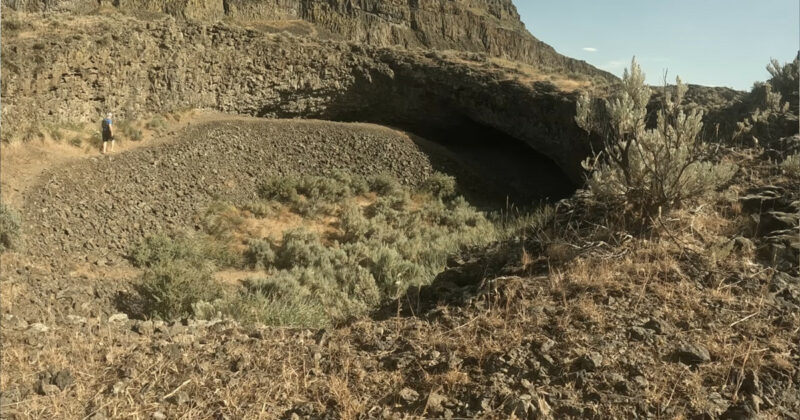
After exploring the cave in the pothole, head back towards the parking lot. Be sure along the way to get out near the edge of the bluff and take in the views. This really is stunning land, even if it is a bit bleak and blasted by the summer sun.
How long does it take to hike the lake lenore caves.
The average time to hike the Lake Lenore Caves is approximately 1-2 hours, depending on your pace and how much time you spend exploring the caves. The trail is relatively short, spanning around 1.5 mile round trip, making it a manageable and rewarding excursion for visitors. Take your time to absorb the ancient beauty of the caves and the surrounding landscape, which can add to the overall experience of the hike.
Are dogs allowed on the Lake Lenore caves trail?
Dogs are allowed on the Lake Lenore caves trail as long as they are kept on a leash. This is definitely an area where you don’t want your pup taking off after a bird. Beyond being bad for the wildlife, there are plenty of ledges and places for them to fall.
Beyond the Caves: Additional Activities in the Area
While you are in the area I would highly suggest you stop at the Dry Falls Vista House and visitor’s center. There is a spectacular view of the dry falls here as well as some very informative signs that talk about just how much water moved through the area, carving these canyons.
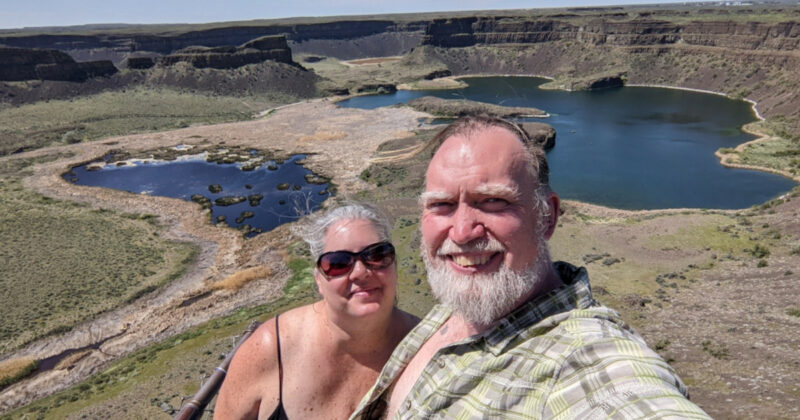
Camping near the Lake Lenore Caves
There is not a ton of places to camp near the Lake Lenore Caves. Your best bets are the Sun Lakes State Park Campground or a little further up the road at the Coulee City Campground.
Where to eat in the area
Realistically there aren’t many choices when it comes to places to eat in the area around the Lake Lenore Caves. There are a couple of restaurants with limited hours up in Coulee City, and a few more down in Soap Lake. My suggestion is to pack up your cooler and come prepared to have lunch at the trailhead before heading on to your next stop.
Conclusion
Lake Lenore Caves offer a captivating journey through time and nature, blending geological wonders with cultural significance. As you prepare for your trek, immerse yourself in the enigmatic beauty of the caves while staying safe and well-equipped. Whether you seek a glimpse into the past or a thrilling hike, this destination offers a unique experience for all adventurers. From exploring the caves’ features to discovering local activities, Lake Lenore Caves promises an unforgettable expedition for history enthusiasts and outdoor lovers alike. Plan your visit during the optimal season, pack essentials, and embark on a memorable trek through these fascinating caves.
Helpful Information
Trailhead coordinates: 47°31’02.5″N 119°29’37.7″W
Trail length: ~1.5 miles roundtrip
Elevation gain: 200 ft.
Trail difficulty: Easy
Pass Required: Discover Pass


